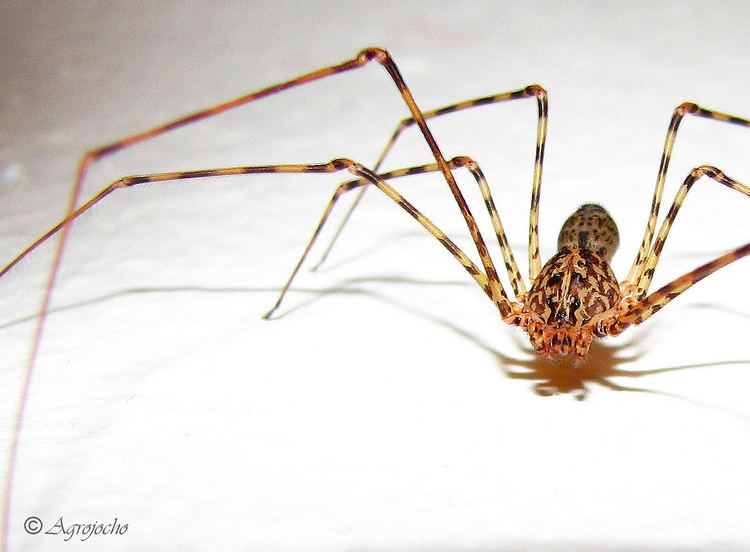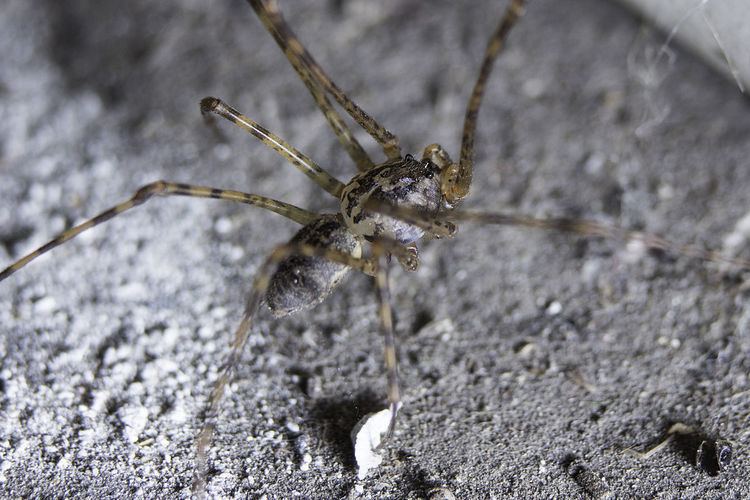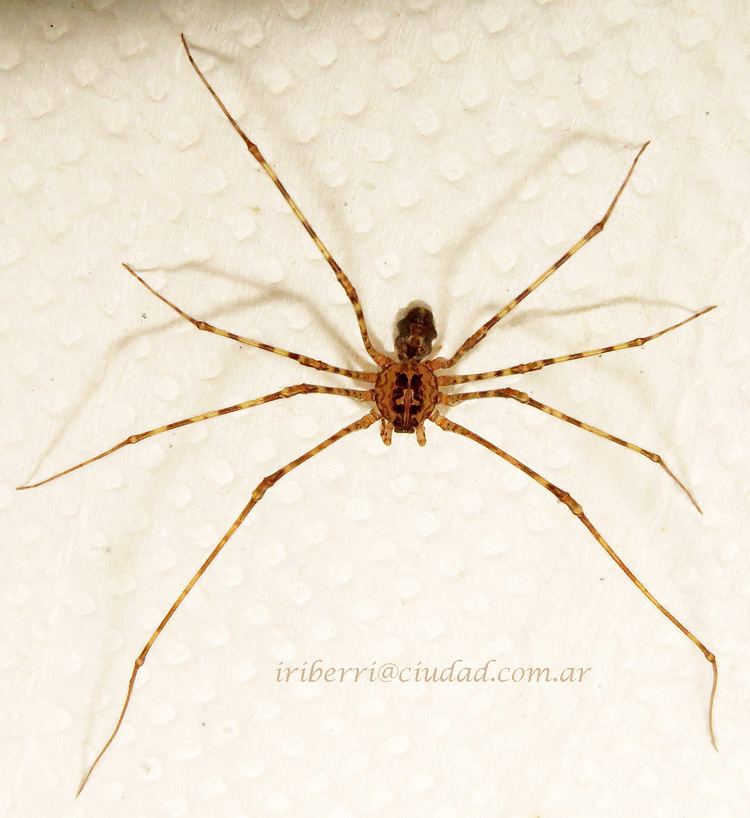Rank Species | Scientific name Scytodes globula Higher classification Scytodes | |
 | ||
Similar Chilean recluse spider, Scytodes, Argiope argentata, Arachnid, Argiope | ||
Ara a escupidora ara a tigre scytodes globula chilean tiger spider
Scytodes globula, the Chilean tiger spider, is a predatory spider of the family Scytodidae. In Spanish, it is known as Araña Tigre, or "tiger spider", but is also well known as "long-legged spider" (because of the disproportional size of those members) or "spitting spider" (because of its hunting methods, in which it projects an extremely sticky web which immobilizes its prey). It has achieved fame by being the only natural predator of the extremely common and dangerous chilean recluse spider (Loxosceles laeta).
Contents
- Ara a escupidora ara a tigre scytodes globula chilean tiger spider
- Description and habitat
- Hunting method
- Prey
- Webs
- Bites
- Relationship with the Chilean recluse spider
- References

Description and habitat

The Chilean tiger spider's size varies from 30 up to 70 mm in the adult state. Its body is small (specially if compared to the size of its legs, which are usually between three and four times the size of its body). It has slow movements and it hunts only at night.

The spider is native to South America (it is more common in Chile, but can be found in other parts of South America, specifically in Argentina, Uruguay and Bolivia). It lives mostly inside houses in dark and hidden places such as behind frames, in closets, etc. But it can also be found outdoors.
Hunting method

The hunting method of the Chilean tiger spider is quite characteristic and it is the origin of one of its nicknames, the spitting spider. At night, the spider stealthily approaches its prey and then contracts its abdomen projecting an extremely sticky and resistant spider-web, which imprisons its prey even if it is larger than the spider; then, once the prey is verified to be immobilized, the spider injects its poison, secreted from its second venom gland.
Prey

The Chilean Tiger Spider preys on flies, mosquitoes, bees, horse-flies, and other insects. However it also eats other kinds of spiders, and it has become famous for being the only natural predator of the common and dangerous recluse spider (Loxosceles laeta).
Webs
The Chilean Tiger Spider builds barely elaborated spider-webs and only in its refuges.
Bites

It is extremely unlikely for the Chilean Tiger Spider to attack beings that are more than twice its size (mainly because of its hunting methods), so an attack on a human being has almost no chance of happening. It has been declared by several studies of Chilean Universities to be "innocuous to human beings". There are no clinical records of attacks on humans.
Relationship with the Chilean recluse spider
Although the tiger spider is widely recognized for preying upon the recluse spider, research from the University of Chile indicates that encounters between these two spider species lead to combat in only 50% of cases. Furthermore, of these confrontations, only 75% result in the tiger spider successfully preying upon the recluse spider. Consequently, the designation of the tiger spider as the natural predator of the recluse spider is subject to question.
